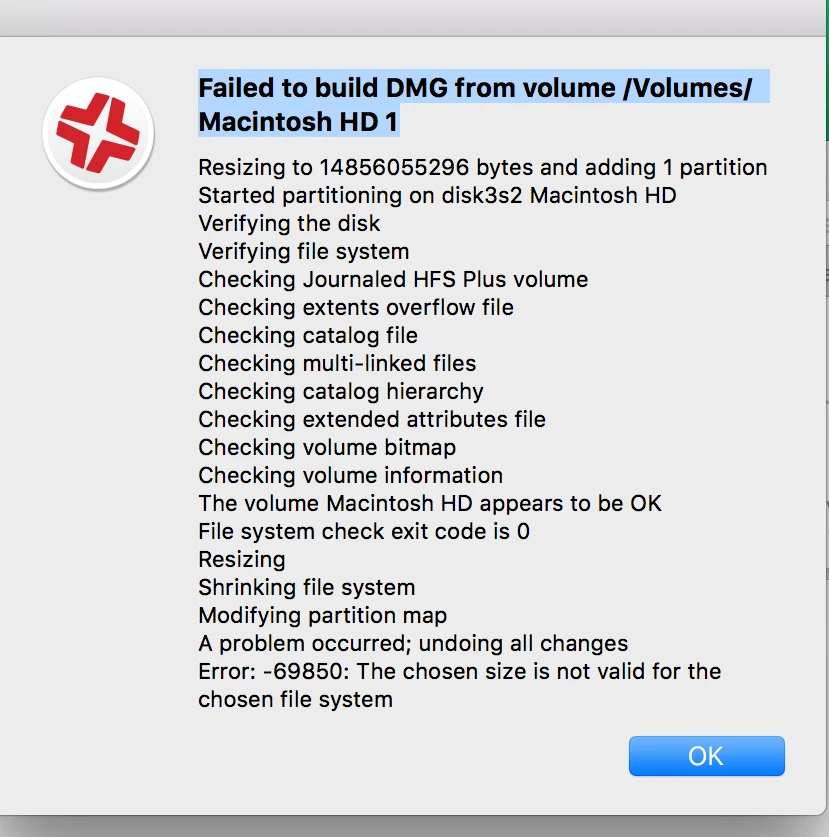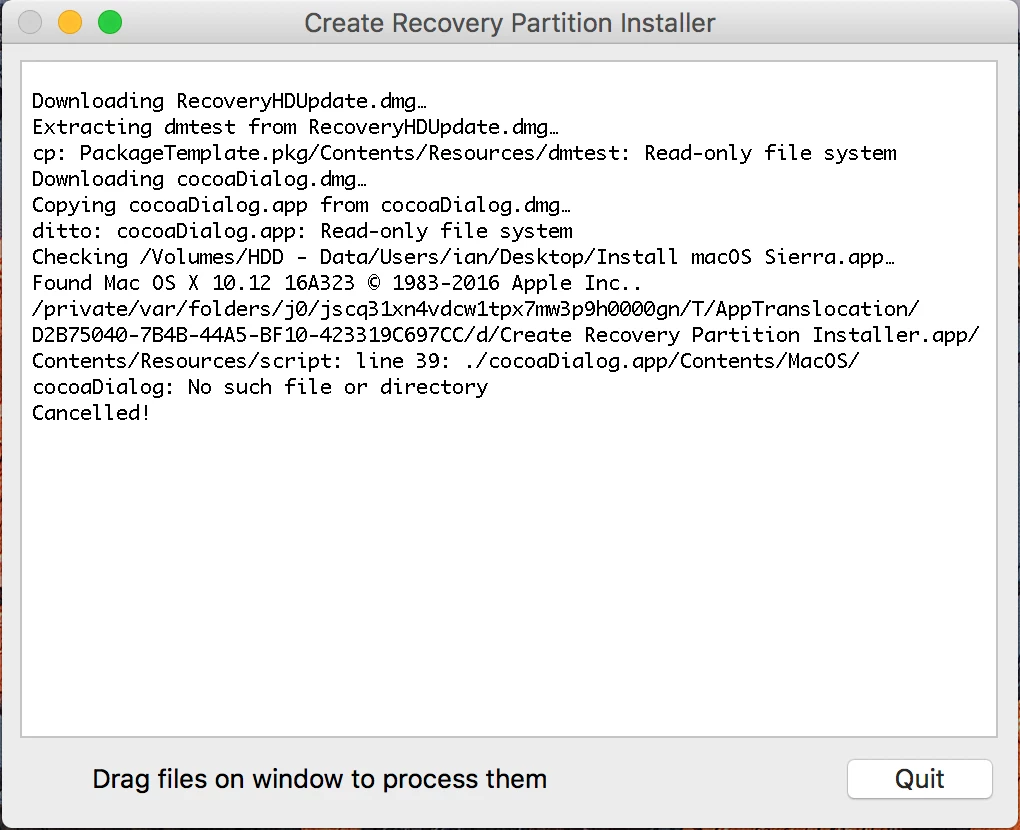I am trying to create an image using composer like i normally do. Usually I click the MacHD as well as the Recovery partition and create an OS package. Now everytime I do it I get this error.
"Failed to build DMG from volume /Volumes/Macintosh HD 1
Resizing to 14856055296 bytes and adding 1 partition
Started partitioning on disk3s2 Macintosh HD
Verifying the disk
Verifying file system
Checking Journaled HFS Plus volume
Checking extents overflow file
Checking catalog file
Checking multi-linked files
Checking catalog hierarchy
Checking extended attributes file
Checking volume bitmap
Checking volume information
The volume Macintosh HD appears to be OK
File system check exit code is 0
Resizing
Shrinking file system
Modifying partition map
A problem occurred; undoing all changes
Error: -69850: The chosen size is not valid for the chosen file system"
What changed in Composer that it now does not allow me to create the OS package? I am using Suite 9.97.












